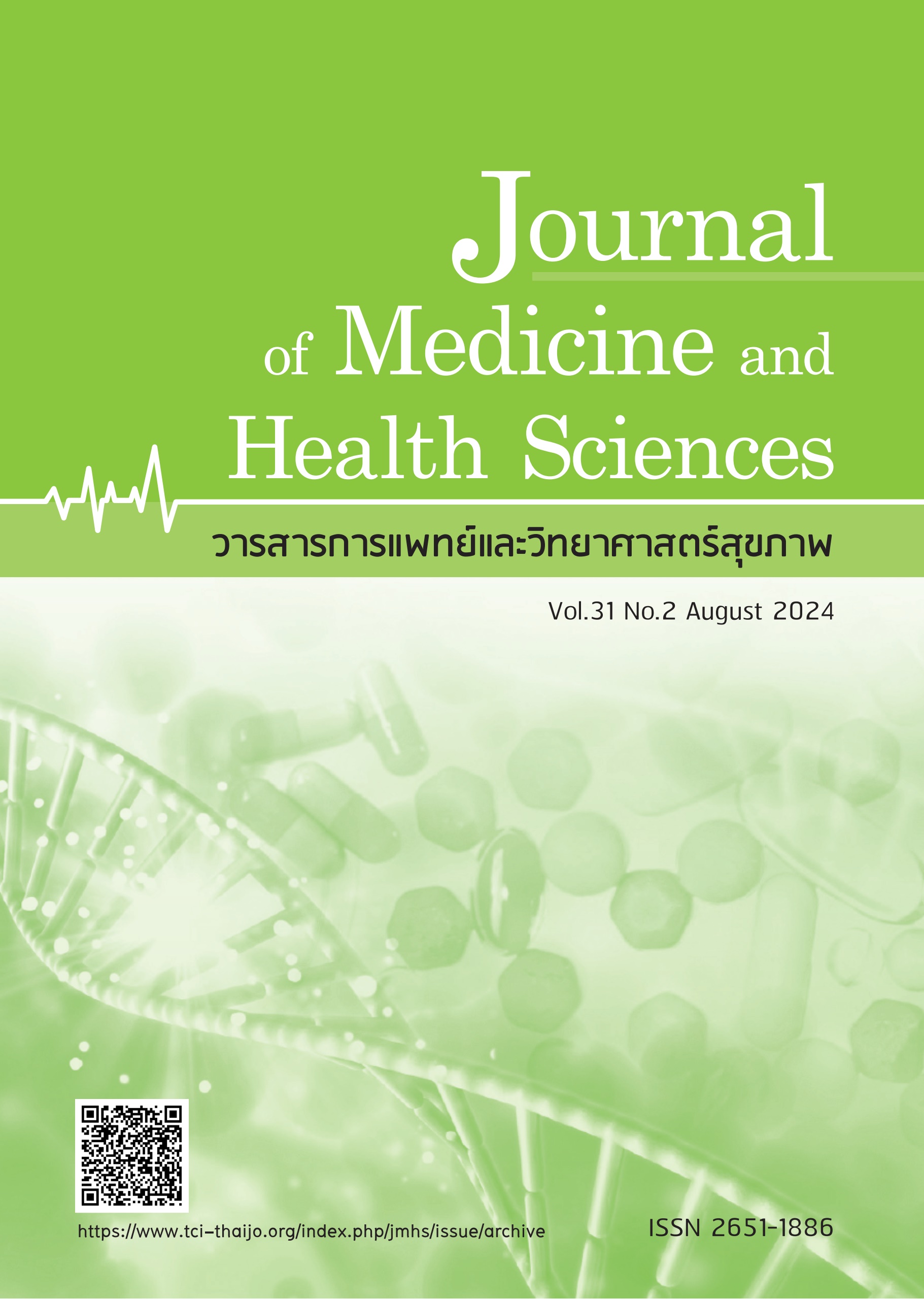Endoscopic endonasal approach transsphenoidal repair of a defective skull base in a CSF leak-infected patient: The first case at Phrapokklao hospital, Chanthaburi province
Keywords:
CSF leakage, Skull base fracture, Endoscopic Endonasal Approach (EEA)Abstract
Cerebrospinal fluid leaks are rare conditions but can be life-threatening. They can lead to dangerous complications, such as meningitis and brain abscess. Cerebrospinal fluid leaks can be divided into three main causes: Trauma or surgery: This includes head accidents or surgeries involving the skull base or sinus area, such as sinus surgery that penetrates the base of the skull, failed skull base repair surgery, and post-operative complications. Non-traumatic causes: These can be caused by conditions like tumors that have spread to the base of the skull. Unknown causes: In some cases, the cause of a cerebrospinal fluid leak remains unknown. This case report describes a cerebrospinal fluid leak at the base of the skull caused by a head injury from a fall. The patient experienced cerebrospinal fluid leaking from their nose and throat. The leak eventually led to an abscess in the sphenoid sinus and cavernous sinus. The patient underwent endoscopic endonasal approach (EEA) surgery to remove the abscess and administer intravenous antibiotics for fourteen days. A second EEA procedure was performed to repair the leak using a naso-septal flap and free tissue graft from the fascia lata. The surgery was successful, and the patient recovered without complications. This is the first reported case at Phrapokklao Hospital in Chanthaburi Province where a cerebrospinal fluid leak was treated using this method.
References
Kasemsiri P. Role of Endoscopic Endonasal Skull base Surgery. SRIMEDJ [Internet]. 2015 Oct. 5 [cited 2024 Feb. 16];30(5):36-41.
Prosser JD, Vender JR, Stores CA. Traumatic cerebrospinal fluid leaks. Otolaryngol Clin North Am 2011;44:857-73.
Banks CA, Palmer JN, Chiu AG, et al. Endoscopic closure of CSF rhinorrhea: 193 cases over 21 years. Otolaryngol Head Neck Surg 2009;140:826-33.
Hadad G, Bassagasteguy L, Carrau RL, et al. A novel reconstructive technique after endoscopic expanded endonasal approaches: vascular pedicle nasoseptal flap. Laryngoscope 2006;116:1882–6.
Hegazy HM, Carrau RL, Snyderman CH, et al. Transnasal endoscopic repair of cerebrospinal fluid rhinorrhea: a meta-analysis. Laryngoscope 2000;110:1166-72.
Mirza S, Thaper A, McClelland L, et al. Sinonasal cerebrospinal fluid leaks: management of 97 patients over 10 years. Laryngoscope 2005;115:1774-7.
Zuckerman J, Stankiewicz JA, Chow JM. Long-term outcomes of endoscopic repair of cerebrospinal fluid leaks and meningoencephaloceles. Am J Rhinol 2005;19:582-7.
Rivera-Serrano CM, Snyderman CH, Gardner P, et al. Nasoseptal “rescue” flap: a novel modification of the nasoseptal flap technique for pituitary surgery. Laryngoscope 2011;121(5):990-3.
Castelnuovo P, Pistochini A, Locatelli D. Different surgical approaches to the sellar region: focusing on the “two nostrils four hands technique”. Rhinology 2006;44(1):2-7.
Kasemsiri P, Duangthongphon P, Prathanee B, et al. Nasal resonance changes after endoscopic endonasal transsphenoidal skull base surgery: Analysis of voice quality. Laryngoscope Investigative Otolaryngology 2021;6(6):1275-82.
Tang IP, Carrau RL, Otto BA, et al. Technical nuances of commonly used vascularized flaps for skull base reconstruction. J LaryngolOtol 2015 13:1-10
Kassam AB, Carrau RL, Snyderman CH, et al. Evolution of reconstructive techniques following endoscopic expanded endonasal approach. Neurosurg Focus 2005;19:E8
Downloads
Published
How to Cite
Issue
Section
License
Copyright (c) 2024 Journal of Medicine and Health Sciences

This work is licensed under a Creative Commons Attribution-NonCommercial-NoDerivatives 4.0 International License.



